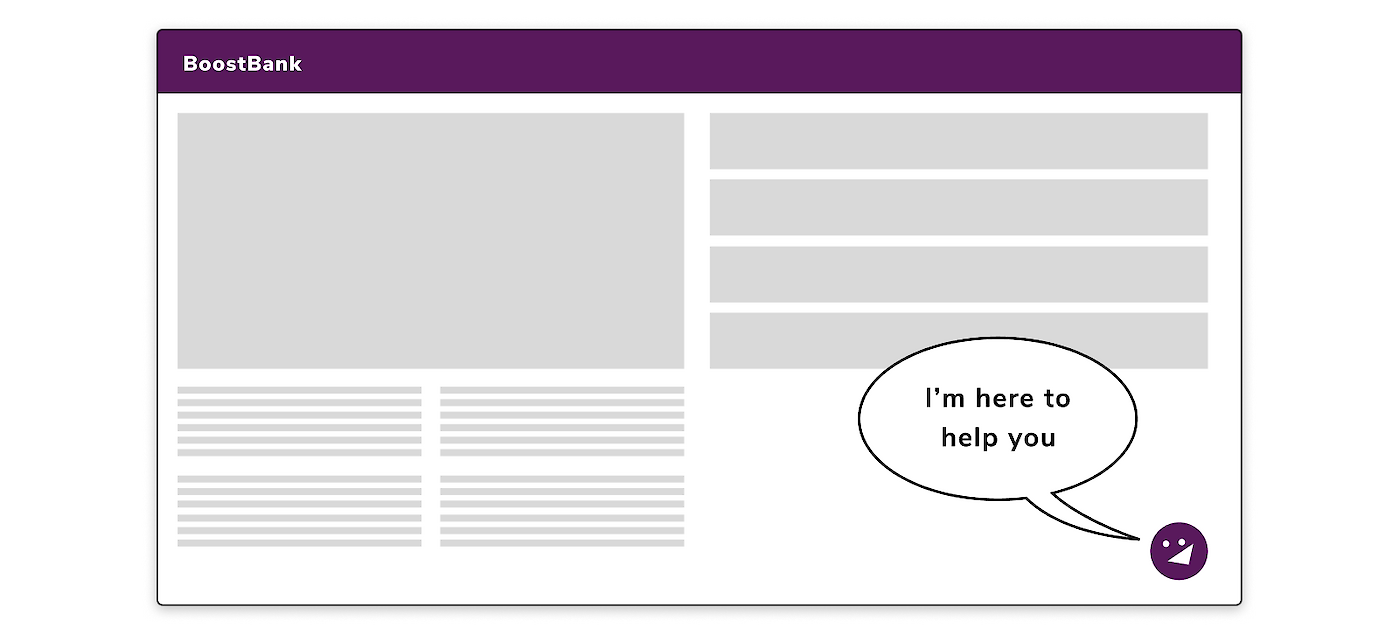Implementing a chatbot for your business can be a complex process, but with the right tools and knowledge, it can be a smooth and successful endeavor. Chatbot best practices can help ensure that your chatbot is able to effectively boost customer satisfaction and increase operational efficiency.
Whether you are an experienced project manager or new to the world of chatbots, there are steps you can take to ensure that your chatbot project is delivered quickly and effectively. We'll explore chatbot best practices that will help you successfully deliver your next chatbot project - from choosing the correct use cases to setting KPIs, we'll cover everything you need to know to successfully deliver your next chatbot project quickly, and without compromising on quality.
Decide on the correct use-case(s) for your chatbot
To determine which use cases are best suited for a chatbot, you first need to identify which parts of your organization would benefit most from automation. This could include areas such as customer service and support, internal knowledge management, or sales optimization.
Once you have identified the areas that could benefit from a chatbot, you can then decide on the specific use cases to tackle first. Some examples of these use cases include:
- Service and support (external chatbot): A chatbot can be used to provide quick and efficient customer service, answering frequently asked questions and resolving common issues without the need for human intervention.
- Internal knowledge (internal chatbot): Employee productivity can be increased by giving them access to crucial information and resources through a chatbot, which also makes it easier for them to find the information they need.
- Sales optimization (external sales chatbot): By offering personalized recommendations and responding to customer inquiries, a chatbot can help with lead generation and sales while boosting conversion rates.
Set and agree on a clear scope
Setting a clear scope and agreeing on it with all stakeholders is crucial for the success of any chatbot project. This is where you can outline the goals and expectations for the project, as well as assess what resources may be needed to achieve them.
To establish the scope and chatbot analytics, follow these steps:
- Outline the goals and expectations for the project, and make sure all stakeholders are on the same page about what they want to achieve. This will help prevent misunderstandings and misaligned expectations down the road.
- Define the requirements for the product, process, and project. This means focusing on the questions that the chatbot needs to be able to answer, as well as identifying any limitations that could slow down or impede the project from moving forward.
- Identify the KPIs that will be used to measure the success of the chatbot, such as the number of conversations handled, customer satisfaction, or conversion rates. This will help you track the progress of the project and make adjustments as needed.
By establishing this from the start you can ensure that your chatbot project stays on track and achieves its goals.
Assemble the right (dream) team
Assembling the right team is crucial for the success of your chatbot project. To ensure that you have the necessary expertise and support across all levels of your organization, we recommend the following structure for your internal and external teams:
- Executive sponsor: This should ideally be someone in a senior position who can act as a champion for the project and help to remove any roadblocks.
- Project manager: This person will be responsible for overseeing the overall project, including setting timelines, coordinating the work of the different team members, and ensuring that the project stays on track.
- Technical team: This team will be responsible for the technical aspects of the project, including designing and implementing the chatbot, integrating it with existing systems, and testing and debugging.
- Domain experts: These are the people who have in-depth knowledge about the specific area that the chatbot will be focused on, such as customer service, sales, or product information. They will be responsible for providing the content and functionality that the chatbot will need to be effective.
- Chatbot vendor: This team will typically be provided by the vendor who is creating the chatbot, and will be responsible for providing technical support, training, and ongoing maintenance.
By bringing together the right mix of expertise and experience, you can create a team that is well-equipped to tackle the challenges of building a successful chatbot.
Integrate your chatbot with your support team
To ensure that your chatbot integrates seamlessly with your existing support team, it's important to choose a conversational AI platform that has a user-friendly, no-code or low-code interface. This will allow your customer service staff to take ownership of training and maintaining the chatbot, leveraging their expertise and experience to create the best possible automated customer experiences.
Opting for a platform with a user-friendly interface also allows for greater control over the chatbot, enabling your customer service staff to easily make changes and updates as needed. This is important for companies that may require more flexibility and customization in their customer service automation.
Choosing the right KPIs
When setting chatbot KPI, you need to consider the use-case for your chatbot and the scope of the project, as well as the specific metrics that will be most relevant to your business.
Some common performance metrics that you should look to measure include:
- Resolution rate: This is the percentage of customer inquiries that the chatbot is able to successfully resolve without the need for human intervention.
- Deflection rate: This refers to the percentage of customer inquiries that a chatbot can handle, reducing the workload for human support staff.
- Average handling time: This is the average amount of time it takes for the chatbot to respond to and resolve a customer inquiry.
- Reduction in queue times: This is the amount by which the chatbot is able to reduce the time that customers spend waiting for a response from support staff.
- Number of sales automated: For chatbots that are used for sales, this metric measures the number of sales that the chatbot is able to complete without the need for human involvement.
In addition to these metrics, it can be helpful to monitor the types of inquiries that your human support staff see an increase or decrease in once the chatbot has been implemented. This will give you a good indication of where the chatbot is making the biggest impact.
Choosing the right KPIs and regularly monitoring them, means you can easily track the progress of your chatbot project and make any necessary adjustments to improve its performance.
Chatbot visibility matters
The visibility of your chatbot is an important factor in its success. Just like with websites, buttons, or other elements, the more visible your chatbot is, the more likely customers will be to know about it and interact with it. If your chatbot is difficult to find, customers may interpret this as you not wanting them to get in contact, which can be a major problem in customer service.
To make your chatbot as visible as possible, follow these best practices:
- Ensure that your chatbot is easy to find on your website. This could mean placing it prominently on the home page, or using clear and prominent calls to action to direct customers to it.
- Design a visually appealing avatar for your chatbot that is instantly recognisable. This will make it more engaging and memorable for customers.
- Use text to encourage engagement with the chatbot. For example, you could use a phrase like "I can help!" to let customers know that the chatbot is available and ready to assist them.
- Use dynamic designs, such as avatar animation or text pop-ups, to grab the customer's attention and encourage them to interact with the chatbot.
- Proactively launch the chat window to grab the customer's attention. This can help to initiate the conversation and make it easier for the customer to start interacting with the chatbot.
In addition to these chatbot best practices, it's important to ensure that your chatbot visibility aligns with your KPIs. For example, if one of your goals is to automate 50% of all chat inquiries, then you'll need to make sure that your chatbot is prominently displayed and easy to find on your website for it to reach its full potential.
Consider going ‘chat-first’
For the best return on investment (ROI), we recommend adopting a "chat-first" approach. This means directing all incoming chat traffic through the chatbot first, before routing it to other channels such as phone or live chat. This allows an organization to automate the highest possible amount of interactions, and in the case of boost.ai, our natural language understanding (NLU) technology will intelligently transfer customers to the right human agent if their request falls outside the chatbot's scope.
Many of our clients have successfully used this approach to automate upwards of 40% of their total customer service traffic, including phone and email.
Anticipate and mitigate risks
By planning for potential risks in advance, you can reduce the likelihood of being surprised by unexpected roadblocks and be better prepared to deal with them if they do arise.
To anticipate and mitigate risks for your chatbot project, follow these steps:
- Identify and describe the potential risks that could impact the project. This could include risks related to technical issues, customer acceptance, or changes in the business environment.
- Determine the probability of each risk becoming an issue. This will help you prioritize the risks that are most likely to occur and require the most attention.
- Categorize the level of impact that each risk might have on the project. For example, some risks may have a minor impact, while others may be more significant.
- Develop a plan for dealing with the different categories of risks that may arise. This could include measures such as implementing additional testing, conducting customer surveys, or adjusting the project scope.

